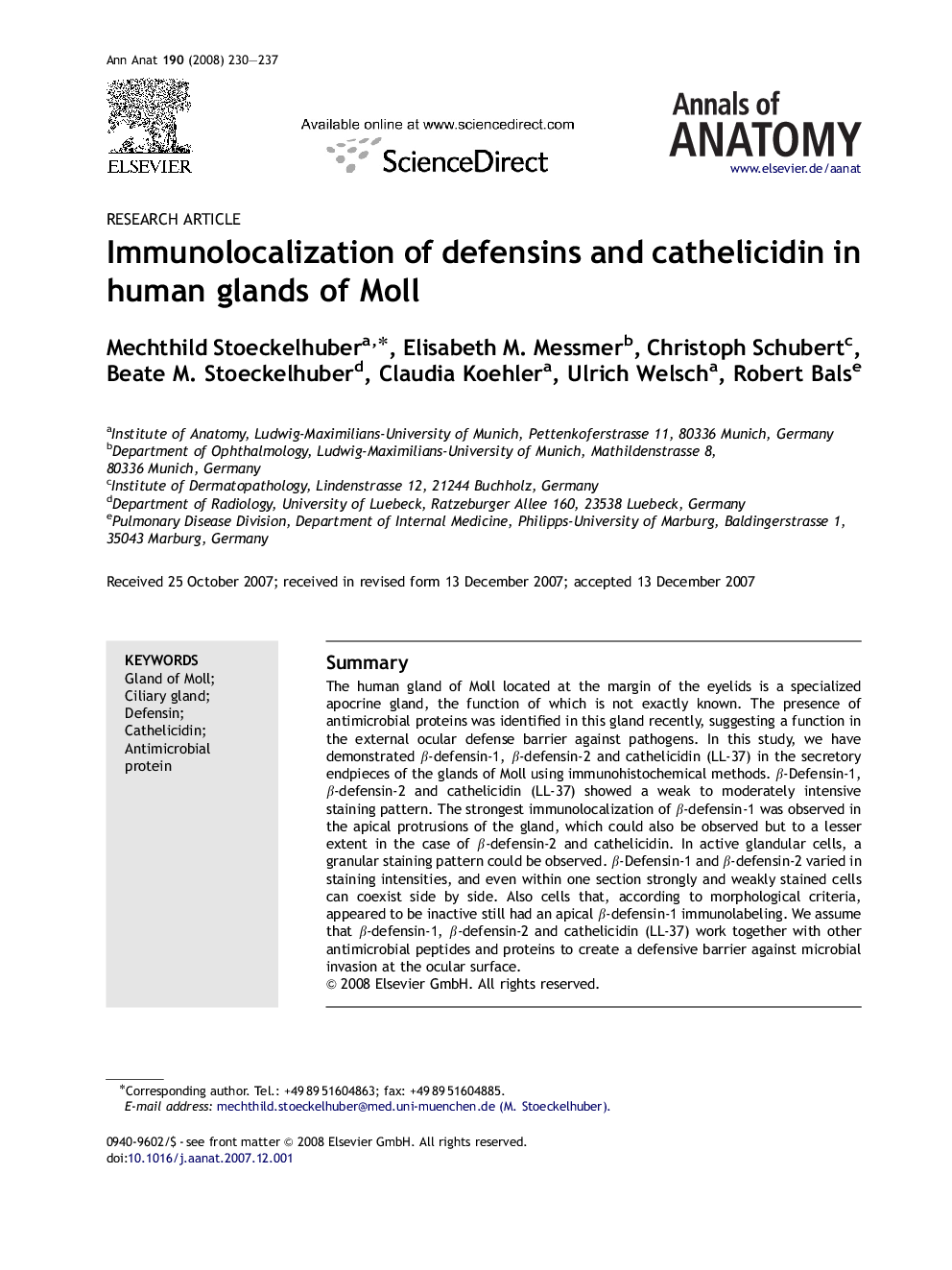| Article ID | Journal | Published Year | Pages | File Type |
|---|---|---|---|---|
| 8462735 | Annals of Anatomy - Anatomischer Anzeiger | 2008 | 8 Pages |
Abstract
The human gland of Moll located at the margin of the eyelids is a specialized apocrine gland, the function of which is not exactly known. The presence of antimicrobial proteins was identified in this gland recently, suggesting a function in the external ocular defense barrier against pathogens. In this study, we have demonstrated β-defensin-1, β-defensin-2 and cathelicidin (LL-37) in the secretory endpieces of the glands of Moll using immunohistochemical methods. β-Defensin-1, β-defensin-2 and cathelicidin (LL-37) showed a weak to moderately intensive staining pattern. The strongest immunolocalization of β-defensin-1 was observed in the apical protrusions of the gland, which could also be observed but to a lesser extent in the case of β-defensin-2 and cathelicidin. In active glandular cells, a granular staining pattern could be observed. β-Defensin-1 and β-defensin-2 varied in staining intensities, and even within one section strongly and weakly stained cells can coexist side by side. Also cells that, according to morphological criteria, appeared to be inactive still had an apical β-defensin-1 immunolabeling. We assume that β-defensin-1, β-defensin-2 and cathelicidin (LL-37) work together with other antimicrobial peptides and proteins to create a defensive barrier against microbial invasion at the ocular surface.
Related Topics
Life Sciences
Biochemistry, Genetics and Molecular Biology
Cell Biology
Authors
Mechthild Stoeckelhuber, Elisabeth M. Messmer, Christoph Schubert, Beate M. Stoeckelhuber, Claudia Koehler, Ulrich Welsch, Robert Bals,
